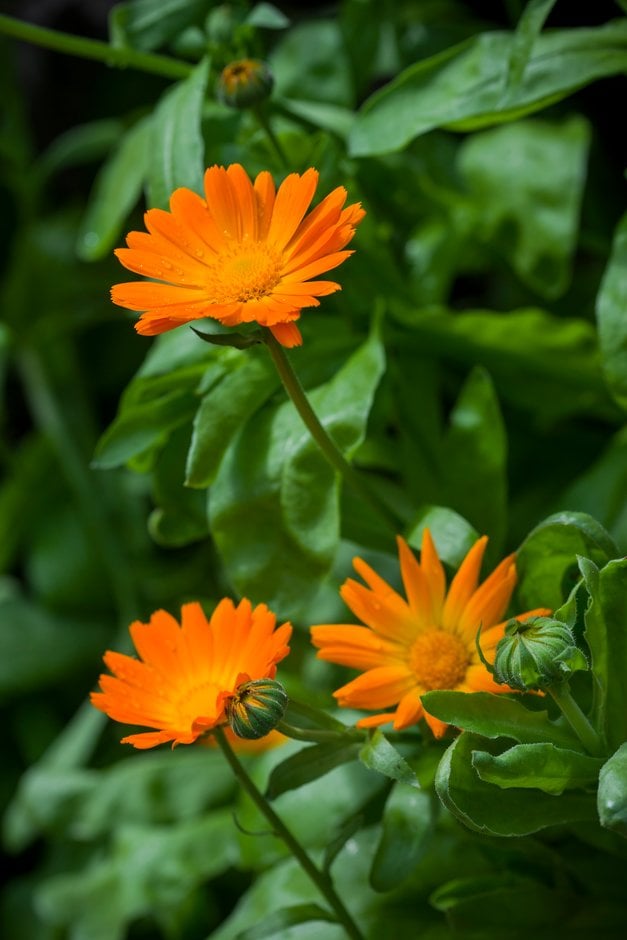Calendula officinalis
common marigold
A fast growing annual or biennial with aromatic leaves and heads of vivid orange daisy-like flowers, borne in long succession in the summer and autumn until the first hard frosts
Other common names
goldinsJack-on-horseback
see moreMary's gold
pot marigold
rod's gold
ruddes
ruddles
Scotch marigold
souvenir
yellow goldes
goldes
goldings
golds
marybuds
Size
Ultimate height
0.1–0.5 metresTime to ultimate height
1–2 yearsUltimate spread
0.1–0.5 metresGrowing conditions
Moisture
Well–drainedpH
Acid, Alkaline, NeutralColour & scent
| Stem | Flower | Foliage | Fruit | |
| Spring | Green | |||
|---|---|---|---|---|
| Summer | Orange | Green | ||
| Autumn | Orange | Green | ||
| Winter |
Position
- Full sun
- Partial shade
Aspect
West–facing or East–facing or South–facing
Exposure
Exposed or ShelteredDrought resistance
Yes Hardiness
H5Botanical details
- Family
- Asteraceae
- Native to GB / Ireland
- No
- Foliage
- Deciduous
- Habit
- Bushy
- Genus
Calendula can be annuals or woody-based perennials, with simple, aromatic leaves and showy, orange or yellow, daisy-like flower-heads in summer and autumn
- Name status
Correct
How to grow
Cultivation
Grow in a light, poor, free-draining soil in full sun or partial shade. Deadhead regularly to prolong flowering and pinch out terminal shoots to encourage bushy growth
Propagation
Propagate by seed sown in situ in spring or autumn
Suggested planting locations and garden types
- City and courtyard gardens
- Cottage and informal garden
- Patio and container plants
- Cut flowers
- Flower borders and beds
- Garden edging
Pruning
Deadhead regularly; cut back after flowering
Pests
May be susceptible to aphids
Diseases
May be affected by powdery mildews and a virus
Love gardening
Sign up to receive regular gardening tips, inspiration, offers and more
View our Privacy Policy
Get involved
The Royal Horticultural Society is the UK’s leading gardening charity. We aim to enrich everyone’s life through plants, and make the UK a greener and more beautiful place.
